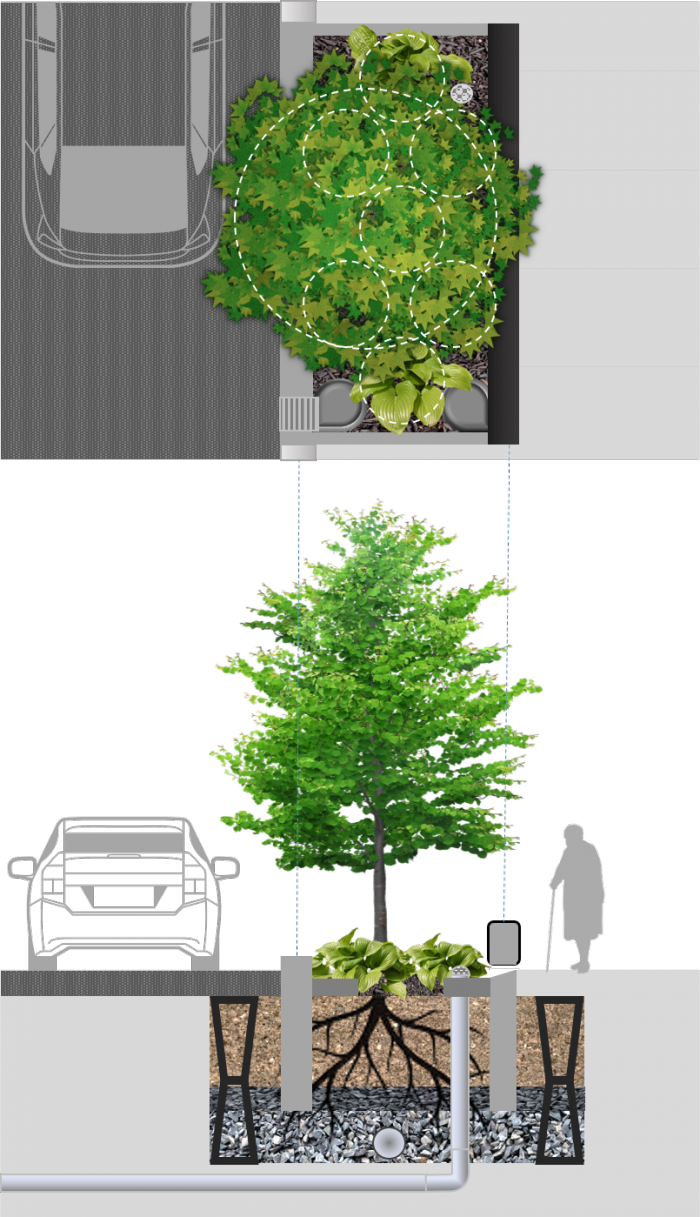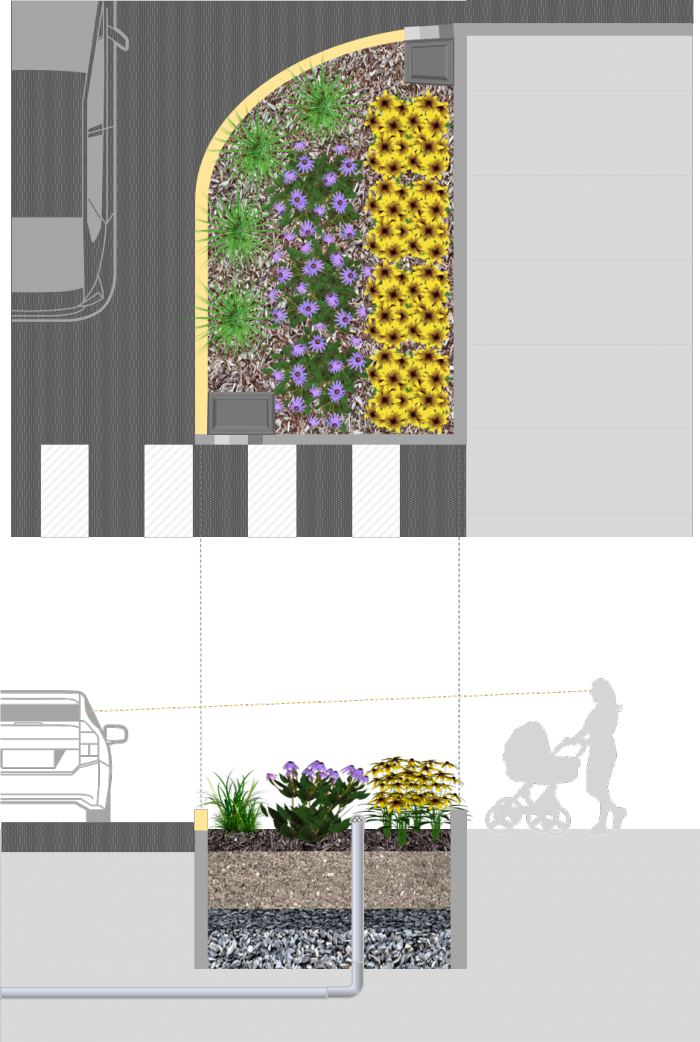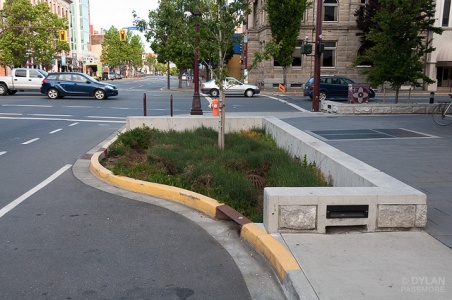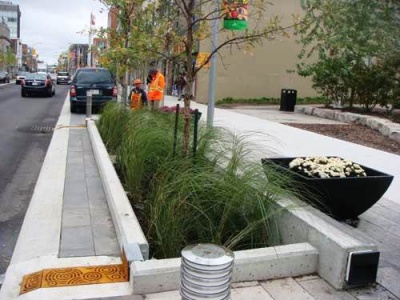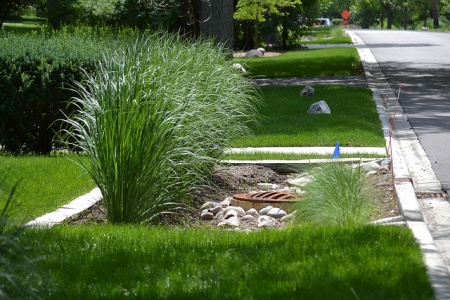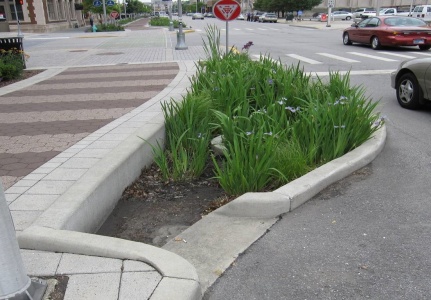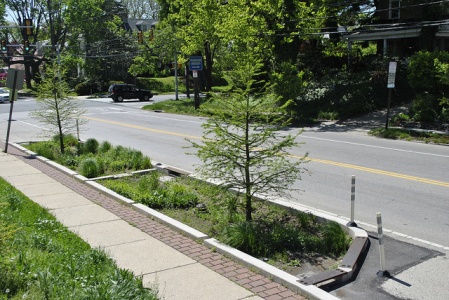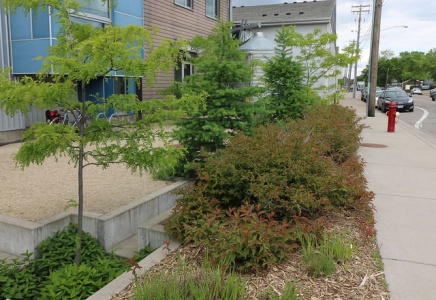Difference between revisions of "Bioretention: Streetscapes"
Jenny Hill (talk | contribs) m (→See Also) |
Jenny Hill (talk | contribs) m |
||
| Line 47: | Line 47: | ||
Hydraulically separated or connected with an [[underdrain]], these are often quite small units of 5 - 50 m<sup>2</sup> each. In urban settings the bioretention may be bounded entirely with hardscape, restricting options for [[pretreatment]] and sheet flow. Amenity and safety can be enhanced on sidewalks with a short (~ 45 cm wall) for seating, although the finished grade is usually only slightly lower than surroundings. Where underground space permits, shade [[trees]] are common feature of these facilities, enhancing the streetscape experience and optimizing transpiration. This type of bioretention is often designed offline, with bypass [[overflow]]. | Hydraulically separated or connected with an [[underdrain]], these are often quite small units of 5 - 50 m<sup>2</sup> each. In urban settings the bioretention may be bounded entirely with hardscape, restricting options for [[pretreatment]] and sheet flow. Amenity and safety can be enhanced on sidewalks with a short (~ 45 cm wall) for seating, although the finished grade is usually only slightly lower than surroundings. Where underground space permits, shade [[trees]] are common feature of these facilities, enhancing the streetscape experience and optimizing transpiration. This type of bioretention is often designed offline, with bypass [[overflow]]. | ||
| − | An excellent opportunity for integrating more bioretention into the street is through careful design of curb extensions for traffic control. | + | An excellent opportunity for integrating more bioretention into the street is through careful design of curb extensions for traffic control. See [[Roadside safety]] for design advice specific to this application. |
==Gallery== | ==Gallery== | ||
Revision as of 10:54, 13 March 2018
Hydraulically separated or connected with an underdrain, these are often quite small units of 5 - 50 m2 each. In urban settings the bioretention may be bounded entirely with hardscape, restricting options for pretreatment and sheet flow. Amenity and safety can be enhanced on sidewalks with a short (~ 45 cm wall) for seating, although the finished grade is usually only slightly lower than surroundings. Where underground space permits, shade trees are common feature of these facilities, enhancing the streetscape experience and optimizing transpiration. This type of bioretention is often designed offline, with bypass overflow.
An excellent opportunity for integrating more bioretention into the street is through careful design of curb extensions for traffic control. See Roadside safety for design advice specific to this application.
Gallery[edit]
Curb extension in Victoria. Image credit Dylan Passmore
Bioretention on residential street, with covered drain inlet (grate in the gutter) and iron grate covered overflow in the centre of the cell, Hinsdale, IL Photo credit: CNT
Curb extension on Queen Lane, in Philidelphia
Photo credit: PWD
Rainwater harvesting cistern, which discharges to tree pits during dry conditions. Image credit Mississippi WMO
Extended tree pit planting in USA
Photo credit: USEPA
